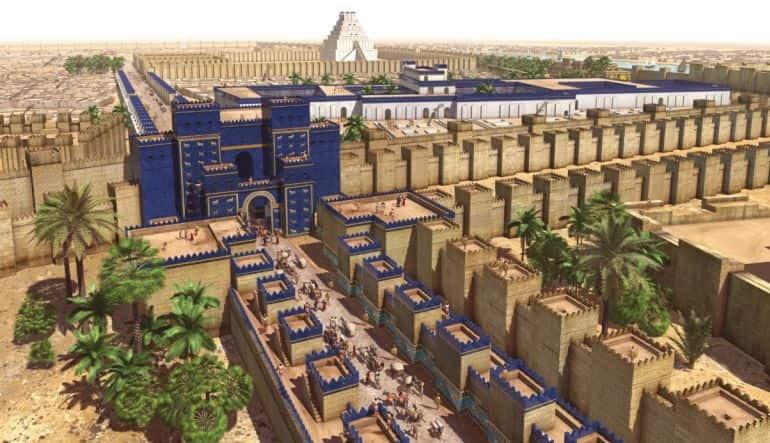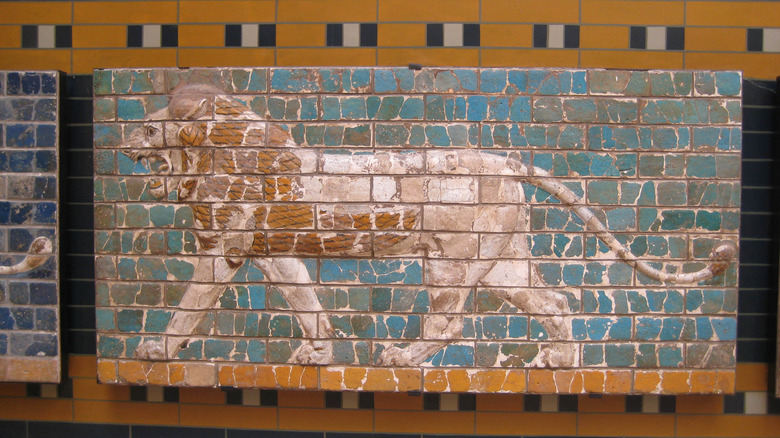Art and Architecture
Art and architechture is the last one in the list of inventions and discoveries of ancient Babylonia. Due to a surplus of clay and a dearth of stone, mudbrick was more frequently used in Babylonia. Thus, the vast, unfinished brick constructions that served as Babylonian temples were buttressed. The pilaster and column, as well as frescoes and enameled tiles, were all first developed as a result of the usage of brick. In addition to having tiles and dazzling colors, the walls occasionally had zinc or gold plating. The plaster also contained painted terracotta torches and cones. The Statues of Gudea are among the earliest instances of three-dimensional figures that predominated in Babylonia in place of bas-relief. These sculptures were realistic but also awkward. Because there was a lack of stone in Babylonia, every pebble became valuable and the craft of gem cutting reached a high level of perfection.
The Babylonians created enormous stone constructions known as ziggurats that resembled enormous towers. Etemenanki, a well-known Babylonian ziggurat with a height of around 299 feet (91 meters), is thought to have served as the model for the Tower of Babel. Now it is a ruin. Even the most commonplace household items were exquisitely painted with depictions of human or animal shapes by the creative painters of ancient Babylon. Present-day museums house many Babylonian antiquities, many of which show scenes from ordinary Babylonian life.












